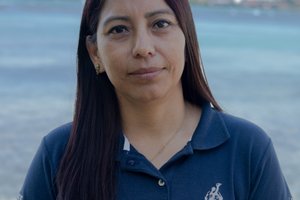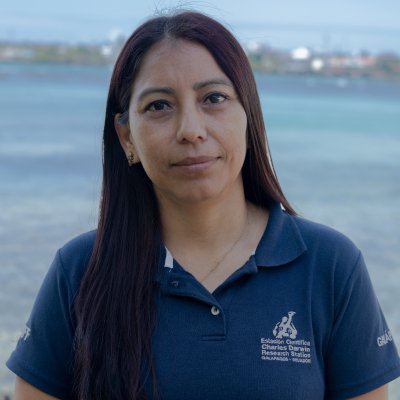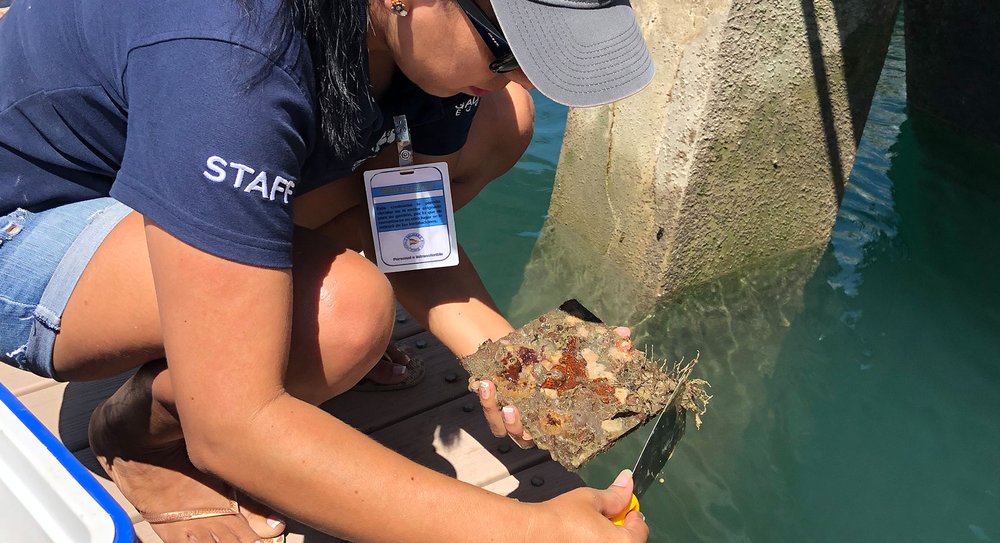
Will it be or not? Identifying marine invertebrates for Galapagos conservation
Working in the Marine Science Department (Bio-Mar) at the Charles Darwin Foundation (CDF) is a unique experience, full of learning and discoveries, where daily I get the chance to learn about, understand and identify marine invertebrates in the Galapagos Marine Reserve (GMR).
When I started out as a researcher in the Marine Invasive Species Project at the CDF, 10 years ago, I had a lot of questions. For example, I wanted to know how it is possible for organisms that cannot swim (e.g. mollusks, barnacles, ascidians, sponges) to move from one place to another or travel long distances? I was eager to know how these species attached themselves to the hulls of ship? What problems could these introduced species create in the Galapagos marine ecosystem? My questions were endless. All this led to me putting even more effort into researching and learning. The Marine Invasive Species Project, led by Dr. Inti Keith, has given to me the opportunity to gradually find the answer to several of these questions, however there are still many to solve. With each day that has gone by, during my time here, I have been gaining experience in my field and begun to understand, in detail, these marine organisms with the unique ability to attach themselves to surfaces such as rocks, docks piles, ship hulls, wood or plastic debris floating in the sea.
With every question I answered, I had a new one. One of these was - how were we going to collect the samples?
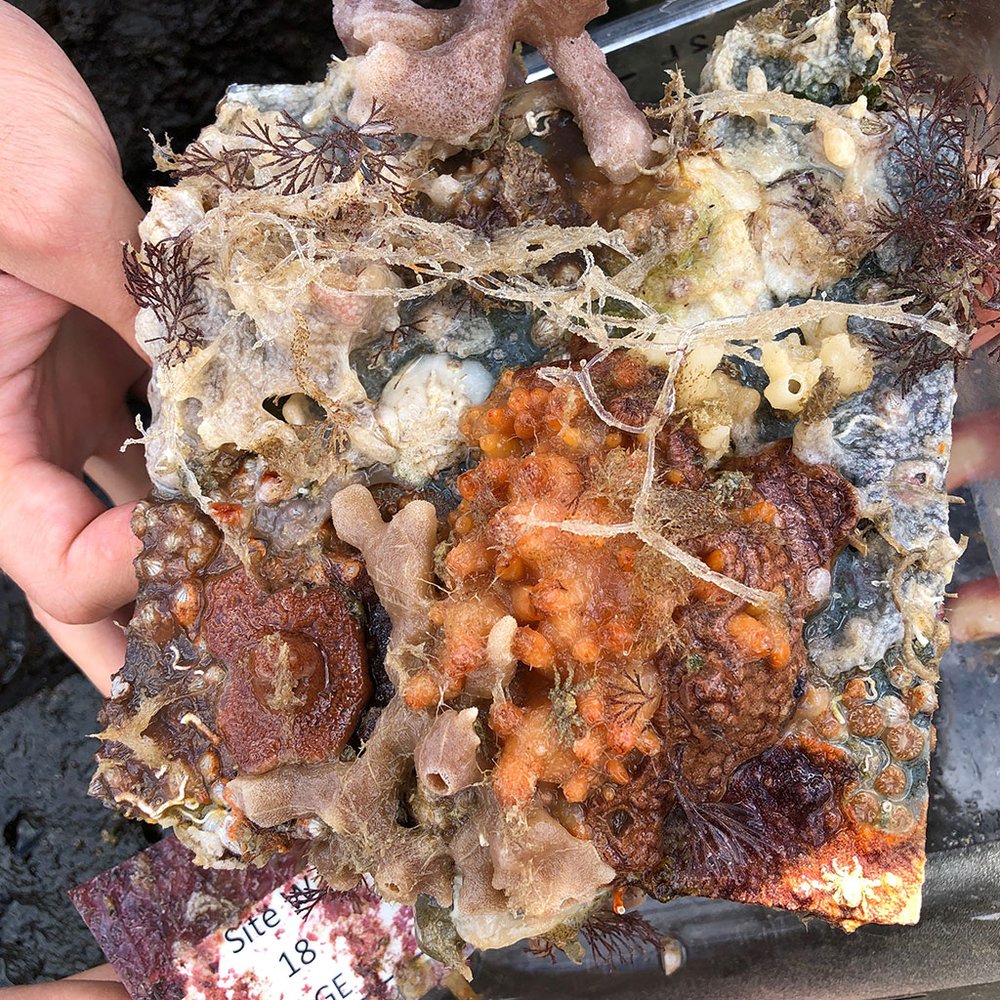
How are marine invertebrates collected?
Our research team studies introduced marine species that can be transported from other regions to the Galapagos, by attaching themselves to the hulls of ships or on floating plastic debris. We use settlement plates made of PVC (polyvinyl chloride) to collect these organisms. This methodology was developed by the Smithsonian Environmental Research Center (SERC), one of our main partners on the project since 2015. Thanks to this collaboration, I have had the chance to work alongside expert scientists worldwide in the field of biofouling organisms, such as Dr. James Carlton and Dr. Greg Ruiz. https://serc.si.edu.
Once the plates are placed in the water, we are able to follow up the settlement process of the species over a period of time of 3, 6, 9 and 12 months. This method also allows us to collect the organisms that easily attach themselves to this artificial substrate, and with this obtain taxonomic descriptions of each species.
In the last few years, we have deployed these settlement plates on the following docks: San Cristobal, Santa Cruz, Baltra and Isabela. In 2020, we carried out an expedition to Floreana, to deploy settlement plates in the dock on this island, for the very first time.
“This project is important, not only for the conservation of the marine biodiversity of Galapagos, but also to contribute to the conservation of the several Marine Protected Areas (MPAs) in the Tropical Eastern Pacific, due to the connectivity that this region holds. Thanks to the environmental authorities of the participating countries in the Eastern Tropical Pacific Marine Corridor Initiative (CMAR), we started to work with some of the MPAs to replicate what we have done in the Galapagos since 2012. Thus, we hope we can create the first marine biosecurity network in the Eastern Tropical Pacific region” says Dr. Inti Keith, the leading scientist on this project.
How are the Marine Invasive Species identified?
Once all the organisms are collected, we must then take an extremely difficult step: identifying them. Once again, at this stage, big questions arise. What species is it? Is it a previously identified species? What is its scientific name?
In order to be able to answer some of these questions it is necessary to know the external and internal structure of each species. Each species has a different shape, composition and texture. For example, some could be smooth, others rough, and others could have incrustations in their structure as camouflage while others could be transparent or exhibit dark colors. By combining the information obtained through visual identification, the taxonomic information in books and publications reviewed, and the data collected in the field we are able to classify the species. In many cases, we can know the "identity", the origin and distribution of the collected species. When a species is not recognized, or it has not been previously identified it is registered as a new record and the information is verified by expert taxonomists. All the organisms collected are stored in the Natural History Collections at the Charles Darwin Research Station.
At the start of the project in 2012, nine marine introduced species were reported. Currently in 2020, after almost eight years of studying these species, we know now that in the GMR, we have 53 marine species classified as "introduced" (Carlton, Keith, Ruiz, 2019). This information motivates us to continue with our research, mainly because these exotic species can continue to be introduced into the Galapagos, given the high number of boats that travel to and around the archipelago. The following steps for this project, in close collaboration with the Galapagos National Park Directorate and The Agency for the Regulation and Control of the Biosecurity and Quarantine for Galapagos, are to increase the sampling and protocol development for early detection and rapid response for these species.
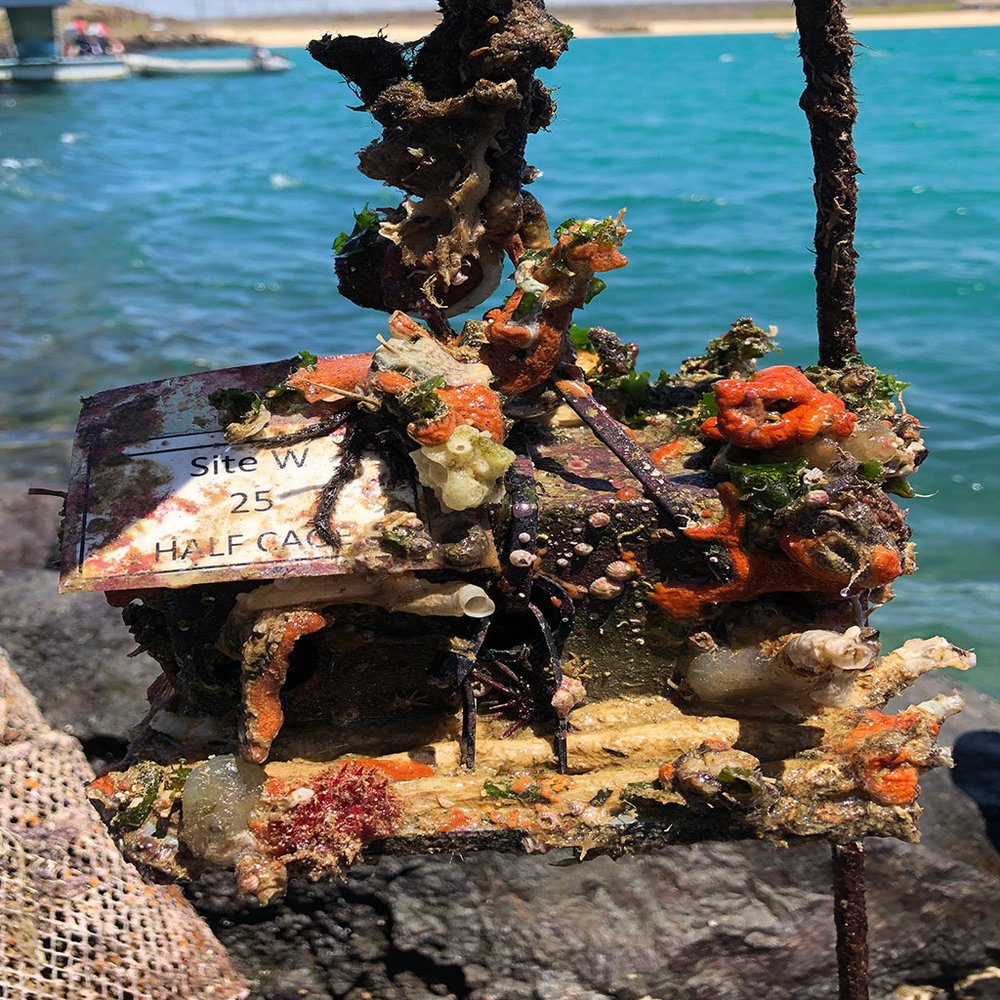
This project is possible thanks to the support of: the Galapagos National Park Directorate (DPNG, its Spanish acronym), The Agency for the Regulation and Control of the Biosecurity and Quarantine for Galapagos (ABG, its Spanish acronym), Port Captaincy of Galapagos, Navy Oceanographic Institute (INOCAR, its Spanish acronym), Smithsonian Environmental Research Center (SERC), Williams College, Southampton University, University of Malaga and the Eastern Tropical Pacific Marine Corridor Initiative (CMAR). Our special thanks to our generous donors Gordon and Betty Moore Foundation, Galapagos Conservancy, Lindblad Expeditions-National Geographic Fund, Galapagos Conservation Trust, Paul M. Angell Foundation and Ecoaventura, for all the support to continue with our work.





